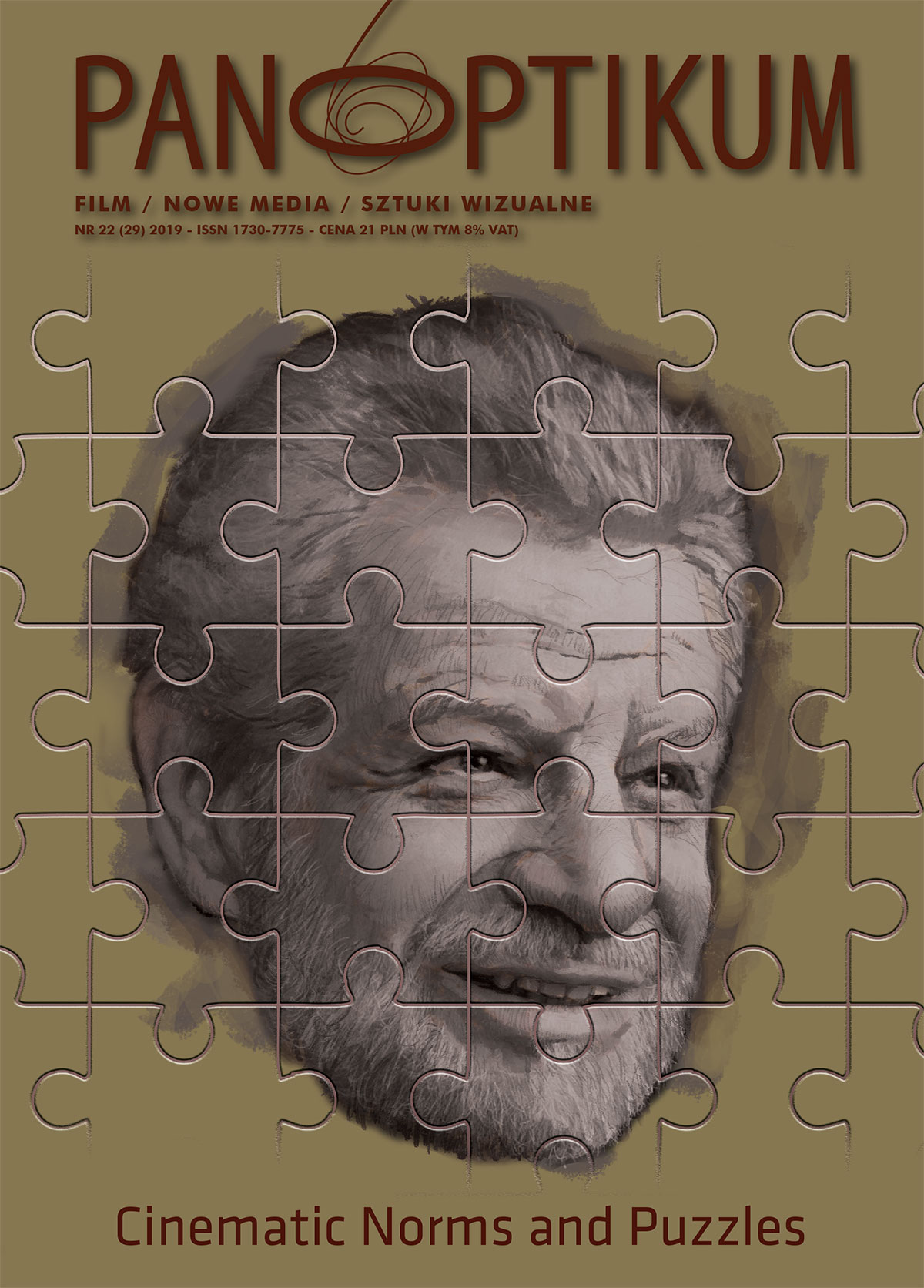Showing the Complexity of the Simple – The Art-puzzle of Hong Sang-soo
DOI:
https://doi.org/10.26881/pan.2019.22.07Abstrakt
Renowned South Korean film director, Hong Sang-soo, has shown deep interest in complex (or some might say: confusing) storytelling throughout his entire career. Since modernist art cinema has an affinity with unconventional narrative structures, it is not surprising that an auteur like Hong is attracted to complexity. What is interesting here is that Hong’s (often black and white) films are a kind of analogue answer to the challenges of digital culture, a modernist art cinema version of puzzle films and database narratives. The article analyses the very Hongian strategy of producing auteurist puzzle films by creating confusion on a perceptive and narrative level.
Firstly, the article summarises how Hong’s unique film making practice not only provides significant (economic, artistic) independence and freedom to the author, but at the same time proves to be a structure that delivers high complexity at a low production cost. Secondly, the article analyses the puzzling techniques used by Hong that work on a perceptual level, and often turn his films into high level memory tests; and how these structures play a part in the “perceptual reeducation” of viewers while also serving as commentaries on cinematic representation. And finally, the article concludes with an analysis of the narrative techniques used by Hong to tell extremely simple stories about the eternal topic of “men want women” in a complex, confusing and compelling way.
Downloads
Bibliografia
Astruc, A. (1948). Naissance d’une nouvelle avant-garde: la camera-stylo. “L’Ecran francais”, No. 5.
Bordwell, D. (1985). Narration in the Fiction Film. Madison, Wisconsin: The University of Wisconsin Press.
Bordwell, D. (2005). Figures Traced in Light: On Cinematic Staging. Berkeley/Los Angeles/London: University of California Press.
Bordwell, D. (2007). Beyond Asian Minimalism: Hong Sangsoo’s Geometry Lesson, in: Huh: Hong Sangsoo. (Korean Film Directors Series) Seoul: Korean Film Council – Seoul Selection.
Buckland, W. (2009). Introduction: Puzzle Plots, in: W. Buckland (ed.): Puzzle Films. Complex Storytelling in Contemporary Cinema. Wiley-Blackwell.
Cameron, A. (2008). Modular Narratives in Contemporary Cinema. New York: Palgrave Macmillan.
Corrigan, T. (2011). The Essay Film: From Montaigne, After Marker. New York: Oxford University Press.
Deutelbaum, M. (2005). The Deceptive Design of Hong Sangsoo’s Virgin Stripped Bare by Her Bachelors. “New Review of Film and Television Studies”, Vol. 3, No. 2.
Deutelbaum, M, (2009). The Pragmatic Poetics of Hong Sangsoo’s The Day a Pig Fell into a Well. in: Buckland (ed.) Puzzle Films Willey: VCH.
Directors Dialogue NYFF55: Hong Sang-soo. https://www.youtube.com/ watch?v=DjAOlKrdpls (Last accessed: 30.12.2019.)
Elsaesser, T. (2009). The Mind-Game Film. in: Buckland: Puzzle Films.
Hartzell, Adam – Paquet, Darcy: The Hong Sang-soo Page. http://koreanfilm.org/hong- sangsoo.html (Last accessed: 30.12.2019.)
Huh, M. (2007), Interview with Hong Sang-soo. In: Huh: Hong Sangsoo. (Korean Film Directors Series) Seoul: Korean Film Council – Seoul Selection.
Kinder, M. (2002). Hot Spots, Avatars, and Narrative Fields Forever: Buñuel’s Legacy for New Digital Media and Interactive Database Narrative. “Film Quarterly”, No. 55.
Raymond, M. (2014). Hong Sang-soo and the Film Essay. “New Review of Film and Television Studies”, No. 12.
Raymond, M. (2015). Two-Shots and Group Shots: Hong Sang-soo’s Mannerist and Classical Mise-en-Scene. “Style”, Vol. 49, No. 2.

 Uniwersyteckie Czasopisma Naukowe
Uniwersyteckie Czasopisma Naukowe









